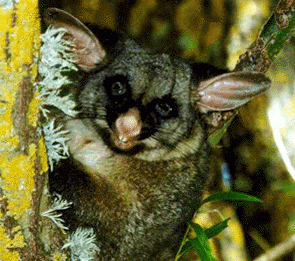
Debate rages over new move to force farmers to pay for 1080 alternatives
Who pays the costs of alternative pest controls for TB?
This story in the Waikato Times raises another issue in the 1080 pest control debate. If pest control is deemed enviromentally unsafe by the public and farmers alike, are they willing to pay the extra costs alternative methods incurr?
Livestock farmings economic future is dependent on achieving the internationally recognised low levels of TB incidence, to enable us to trade our beef and venison world wide.
We have made spectacular progress in eradicating this disease in NZ, ahead of the targets imposed by the regulators. But the job is not over yet and to back off now, could put in jeopardy all the work previously done, and future trade.
A King Country farming family who won't agree to aerial 1080 drops on their property face court action by the regional council, which wants them to pay the extra $40,000 it claims ground control will cost. The stand-off, which has seen a neighbouring landowner threatened with a $27,000 bill, shapes as the first real test of a regional council policy forcing landowners to pay for alternatives to aerial 1080 possum control.
Aria landowner Simon Beveridge told the council he could not afford to pay its estimate for the extra cost of ground control, using traps or alternative poisons on his 774-hectare property. Staff will also seek approval to levy the landowners for the cost of extra control operations – around $18,000 – on surrounding properties they said was forced by the delay in conducting possum control work as a result of the stand.
Council pest control contractor EcoFX has priced ground control at between $23,000 and $31,000 more than aerial treatment for the Beveridge property, and $22,000 more for the neighbouring landowner's block. But Mr Beveridge – and his neighbours – dispute those estimates. They want the control work priced and performed by another contractor. Two other "credible" pest control contractors – one of which also held EW contracts– who both said ground control should not cost more than aerial control.
1 Comments
What a load of lies Mr. Graf!
Do you honestly believe that DoC, Forest & Bird ect. would advocate 1080 as a good pest control method if your statements were correct? Who can take your statements seriously?
Your statements are in total denial of all the scientifc evidence - hundreds of papers worth - of honest and balanced sicentific research by people who are trained and capable to provide objective evidence and not subjective propaganda such as your movies.
Form one examlpe paper here:(Innes, Barker, 1999)
We suggest that large-scale use of toxins
continues in New Zealand despite these large
knowledge gaps, because research consistently
suggests that the harmful effects of pest mammals are
overwhelmingly greater than those of the toxins used.
Source: http://www.newzealandecology.org.nz/nzje/free_issues/NZJEcol23_2_111.pdf
or just use the Scholar option at Google to see how many reasearch papers you can find on the subjetc:
Then type "1080 pest control new zealand" or similar.
There is overwhelming scientific certainty that:
1) 1080 is not causing any measurable health risk to the population if used as designed. There is no evidence that 1080 has been ever found in dangerous levels in any drinking water supply.
2) That 1080 is a prefereable pest control substance to other slow decaying substances such as brodifacoum because it decays very quickly in nature (days) into harmless substances and only inside Carcasses can sustain in absence of water for up to a few month. This causes the risk to stray hunting dogs during that time. If 1080 treated areas are avoided by hunters with dogs out of control for a few month after 1080 treatment then this risk is null.
3) That toxins in the use of predator control are favorable and hugely benefifical to the eco system at large and the recovery of native species in particular and that the risks and the by-kill of some non-traget species are overwhelmed by the succes rate of breeding in the next season.
4) That pest control by bait, especially aerial dorps is far more cost effective than laborious trapping which has a low overall kill rate and is only practical in accessible places and normally leaves huge areas untreated from which constant re-invasion of predators into trapped areas happens.
You have obviously one aim only: To get rid of pest control so you and your fellows can enjoy stalking deer, pigs and possums in all forests at all times of the year and don't have to "endure" the inconvenicnce of having to wait a few month here and there to keep your dogs safe. Besides stray hunting dogs are probably one of the main killers of Kiwi in our contry!
One more comment: In the 50 years or so of 1080 use not a single person is known to have died from this while about 60 people have been shot and killed by stray hunting bullets, 10 people died from lightning strike and well over 25,000 died from traffic accidents and that many again very sadly took their own life! Our society has much bigger problems than bickering about the methods in which we keep a lid on the predators that were introduced by the early settlers in what can only be considerd the worst environmental crime of this country ever!
We welcome your comments below. If you are not already registered, please register to comment
Remember we welcome robust, respectful and insightful debate. We don't welcome abusive or defamatory comments and will de-register those repeatedly making such comments. Our current comment policy is here.